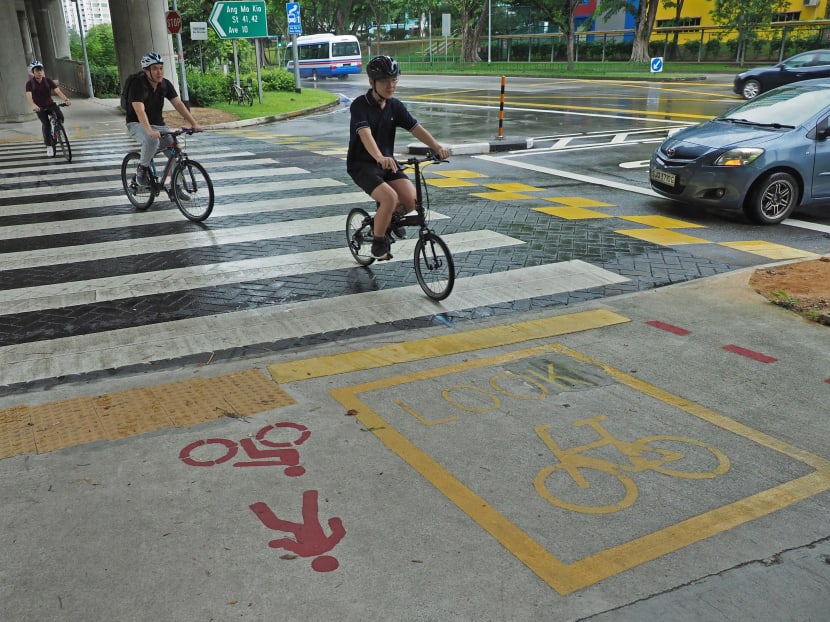Covid-19: Don’t waste opportunity to rethink transport in Singapore
The Covid-19 outbreak has affected how we live, socialise, work and travel. We will live in its shadow until there is a vaccine.

The way Singaporeans move around the island needs to undergo a reset based on lessons from the Covid-19 pandemic, says the writer.
The Covid-19 outbreak has affected how we live, socialise, work and travel. We will live in its shadow until there is a vaccine.
In the meantime, we live by a “social vaccine”: Practising good personal hygiene, wearing a mask and maintaining social distancing.
As we transit to a near-normal, we have to move away from old norms, such as peak-period traffic congestion, crowded public transport, road accidents, air pollution, and conflicts between pedestrians and cyclists on footpaths.
While public transport ridership has dropped, social distancing is nearly impossible on crowded buses and trains.
Since wearing a mask does not altogether remove the anxiety of contracting the coronavirus, more people have switched back to cars, taxis or private-hire vehicles.
In the past four decades, there has been much effort to encourage people to take public transport.
It will be a retrograde step to reverse this shift.
Instead, what is needed is to reduce the number of journeys, and thin and spread out the use of roads and public transport across different periods of the day.
The inflexible 8am to 5pm routine for starting and ending work — the leading cause of traffic congestion — needs a review.
Flexible work arrangements give employees more latitude to decide on their working hours. Telework brings work to people, instead of people to work, thereby reducing travel.
The pandemic has forced us to adopt telework and flexi-work. These measures have reduced peak-hour congestion and eased peak-hour passenger loads on public transport.
A word of caution, though. Not all job activities lend themselves easily to telework. Flexi-work could also result in unsatisfactory situations without enforcing ground rules and minimum hours of contact.
During the circuit breaker stay-home period, many found joy in walking and cycling outdoors for exercise and for picking up essentials in their neighbourhoods. It is necessary to keep up this momentum by providing better facilities for these transport modes.
A significant winner this period has been the online ordering and delivery of groceries, food and small essential items by delivery vans and two-wheelers.
This trend will continue because many people who are working from home have come to experience the advantages of such arrangements.
Delivery crew need more parking spots and waiting areas near commercial venues.
Although we have stringent fiscal measures to discourage the widespread use of private vehicles, we continue to dedicate an excessive amount of space to them on the roads and at car parks.
The pandemic has shown us that the air clears when fewer cars travel, which also makes the roads safer. It is the right time to recover some space allotted for private vehicles on roads and at car parks for sustainable modes, such as buses, bicycles and pedestrians.
At the end of the pandemic, there is a need to “reset”. If this reset is not to a more sustainable and efficient way of travel but more of the same as the pre-Covid-19 era, we would have wasted an opportunity.
Have views on this issue or a news topic you care about? Send your letter to voices [at] mediacorp.com.sg with your full name, address and phone number.






